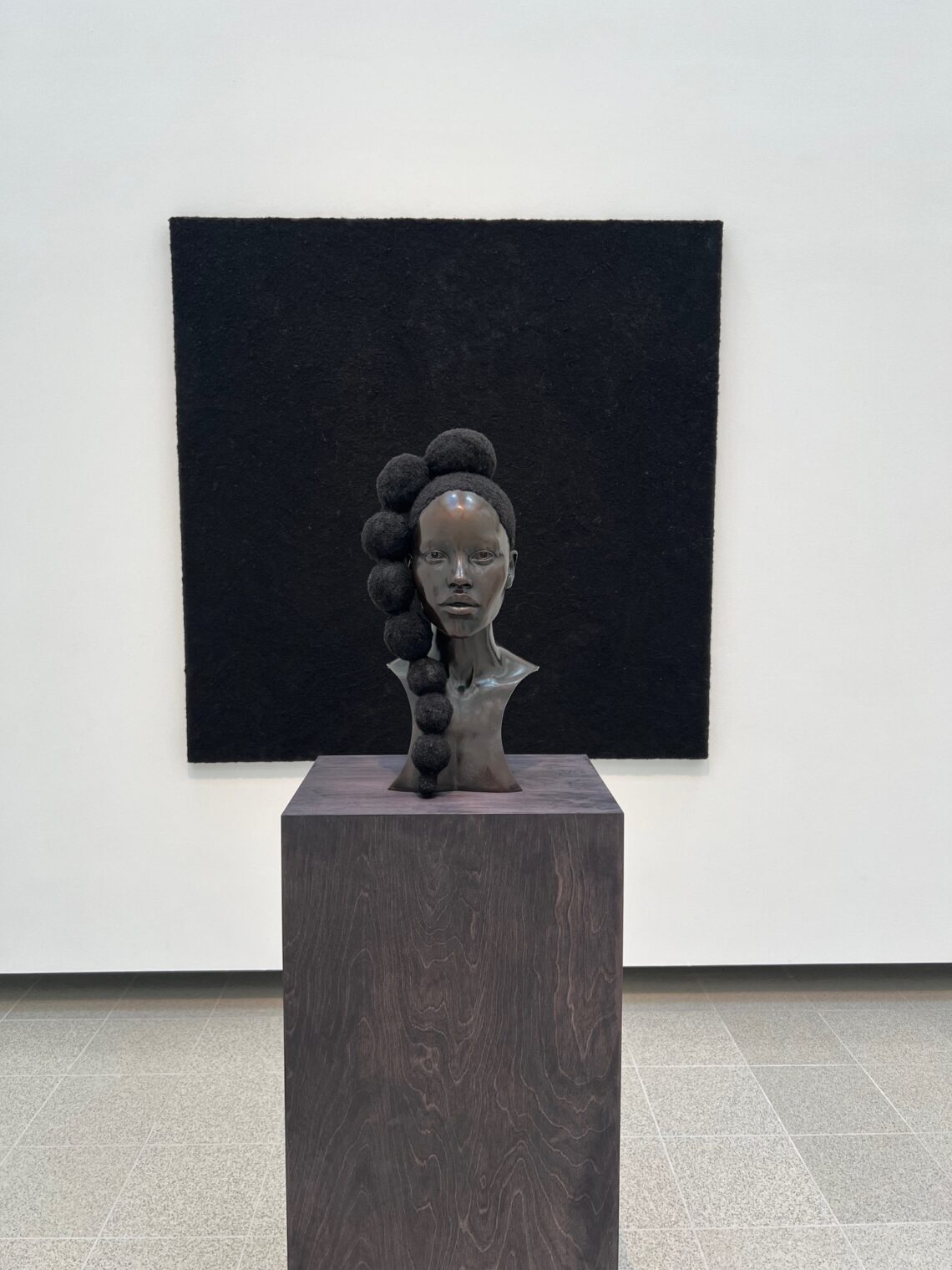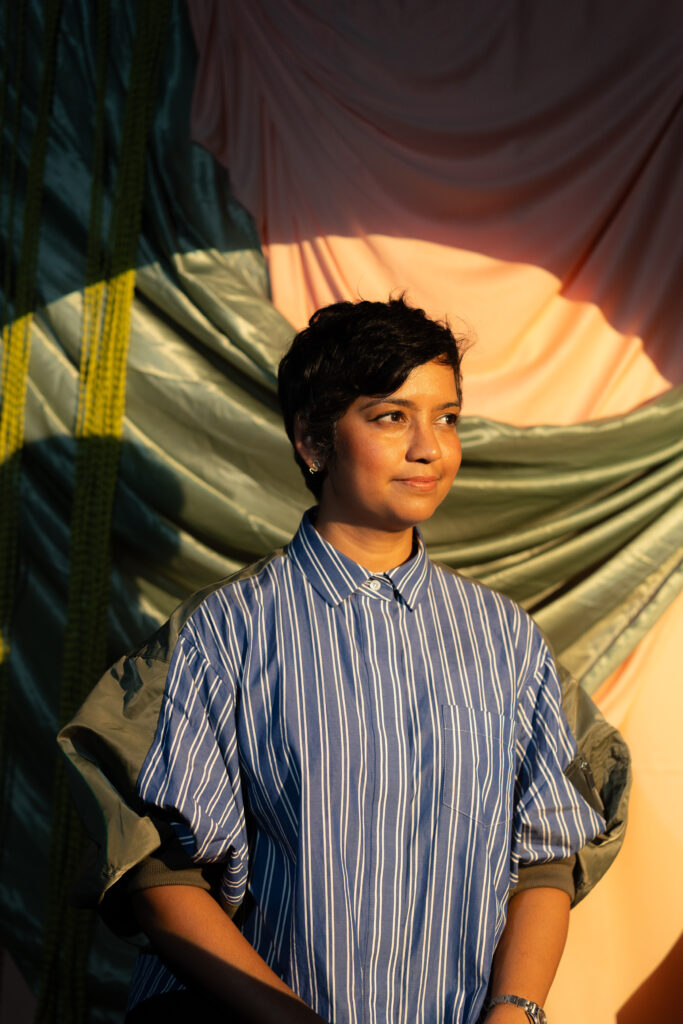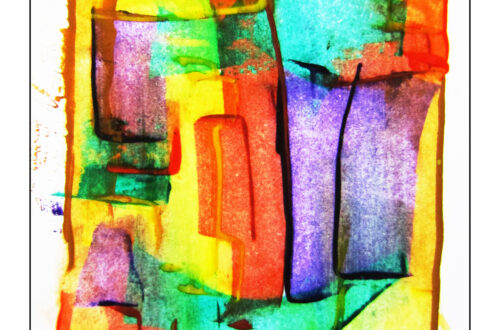
Wish Hair Cream
sculpture by Tavares Strachan
by Sumitra Mattai
How to use:
- Squeeze a quarter-sized dollop into your palm, and lightly massage into your three-year-old daughter’s Afro as she sits in the bath.
- Hold small sections of her hair at the roots. Gently run through them with a wide tooth comb, like your husband showed you. She doesn’t scream when you do it this way, even as you comb through the more tangled, matted areas.
- When she’s lotioned and dressed in mismatched pajamas of her choosing, sit her down at your feet with a pile of chubby legos.
- While she builds a lime green and orange house, pump more cream into your palms. With coated hands, begin to spiral strands around your fingers to give the curls more definition, like your nanny showed you. Work your way around her crown. This could take between three and fifteen minutes, depending on her level of patience.
- When she asks to see what she looks like, take her to the full length mirror hanging in your bedroom. Watch her smile and touch her damp curls, like glossy ribbons. Inhale the cream’s coconut and lemon scent wafting from her hair, making her smell like a cupcake.
- In her reflection, observe how every aspect of her person seems to glow – her hair, her brown skin, her dark eyes. “I’m so beautiful, right?” she says. A statement and a question.
- Kneel down and wrap your arms around the warm hill of her belly. Tell her she is so beautiful you might explode.
Benefits of styling:
- In the morning, when her hair is dry and straggly, do a hurried version of the ritual. Splash water and slather cream. Watch the curls revitalize, regaining sheen and texture. Begin to understand that her hair is thirsty, requires nourishment, like the rest of her body.
- Hope that you are doing this right, that you are not one of those moms who can’t figure out her child’s biracial hair. Watch Youtube tutorials. Take notes. Accept that her appearance is a direct reflection of your care as a mother, even more than her intelligence or strength.
- Think of how often passersby assume she is a boy because of her short hair. Feel guilty for all the times you trimmed her curls, snipping off the impossible tangles, shearing her like a sheep.
- Encourage her passion for accessories. Buy her bows, clips, and headbands. Delight in her doll-like appearance.
- When the Gen Z barista in a crop top looks at your daughter and exclaims, “I love your hair!” feel a surge of relief.
- Flinch when your Carribbean in-laws say that your kids have “good hair.” You want to unpack this loaded phrase, but realize that colonialism and racism may not be appropriate topics for a cookout. Say thank you and take another bite of fried plantain.
Size: 4oz or 8oz bottle. Available in a refillable gallon jug, made from recycled plastic. Lifetime supply recommended. You’re going to need it.
Works best with Wish Shampoo and Conditioner, Wish Hair Serum, and Wish Hair Oil. Subscribe and save. Fill your online cart and spend more than you should. Ignore the inner voices of your frugal immigrant parents.
Caution:
“There was a little girl,
Who had a little curl,
Right in the middle of her forehead.
When she was good,
She was very good indeed,
But when she was bad she was horrid.”
Henry Wadsworth Longfellow
Suitable for:
- All ages and hair textures, even your own chin-length bob, grown out from the pixie cut you’d worn on and off for over a decade, recently colored to hide your grays.
- Scroll through photos of yourself in your twenties, when the haircut felt like a revelation. Remember how the freshly cut ends felt like a shag rug against your palms, slipping easily between your fingers. By that time, you had attended art school, become a designer, and moved in with your boyfriend long before you were married – decisions barely supported by your family. The pixie cut, with its air of gentle defiance, fit the adult you were becoming.
- Recall how women used to stop you in the street to tell you they loved your haircut. Feel hurt as the compliments fade over time. Accept that in your padded middle-aged body, the haircut reads as more practical than cool. Allow yourself to acknowledge the loss of what those women once admired – the unexpected mix of your brownness, boldness and youth.
- Now that you are past the awkward mullet-stage of growing out your hair, realize you do not have the will or the time for blow drying and flat-ironing as you did as a teeanger, spending an hour in your mother’s bathroom. Rely on the cream to calm the frizz, to create gentle waves.
- Study sepia-toned photos of your mother and aunts back home in Guyana, South America where they grew up. Admire how their tresses framed their faces in calligraphic waves, swooning down their backs. Marvel at the fact that your mother has never had a professional haircut.
- Wonder if, in a few decades, you will look like her, your silvery black hair parted in the middle, flowing to your shoulders like moonlit rivers.
Clinical Results:
- When gray emerges at your part and sideburns, make an appointment with Axel, your gay Puerto Rican stylist who shaved off his curls because he got more dates as a bald man.
- When your husband asks if you feel better after dyeing your hair, let out a sigh. You have given in to the patriarchy, the social pressure to appear young when you are not. You’ve paid for chemicals to burn and itch your scalp, to make your hair a darker and more witchy shade of black. But yes, sure, you feel better.
- “I love your hair, Mama,” says your daughter, ever observant of your looks, your outfits, the make-up you hurriedly apply each morning in the semi-darkness of the foyer. Wonder when she will stop thinking this, when she will see the truth.
- Your son barely notices his own hair, let alone yours. He goes to the barber with your husband once a season, gets a faux hawk, comes back laughing.
Ingredients:
Water. Coconut and lemon extract. Myristyl Alcohol, Cetyl Alcohol, Propanediol. Seed wax, Guar, Citric Acid. Benzyl Salicylate, Disodium Phosphate, Polysorbate 60. The wishes of girls and women, crushed to a fine, crystalline powder.

Sumitra Mattai is a writer, storyteller, and textile designer based in New York City. She holds a BFA in Textile Design from the Rhode Island School of Design and an MFA in Creative Writing from The New School. Her essays exploring identity and culture have been published in the Huffington Post, Scary Mommy, and The Inquisitive Eater, among others. For more information, visit her website, www.sumitramattai.com, or find her on Instagram @sumitramattai.
Tavares Strachan was born in Nassau, Bahamas, and currently lives and works between New York City and Nassau. He received a BFA in Glass from the Rhode Island School of Design in 2003 and an MFA in Sculpture from Yale University in 2006. He draws on both the resources and community of his birthplace, dividing his time between his studio in New York and Nassau, where he has established an art studio and scientific research platform B.A.S.E.C. (Bahamas Aerospace and Sea Exploration Center) and OKU, a not-for-profit community project encompassing an artist residency and exhibition spaces, a scholarship scheme, and after-school creative programs.




